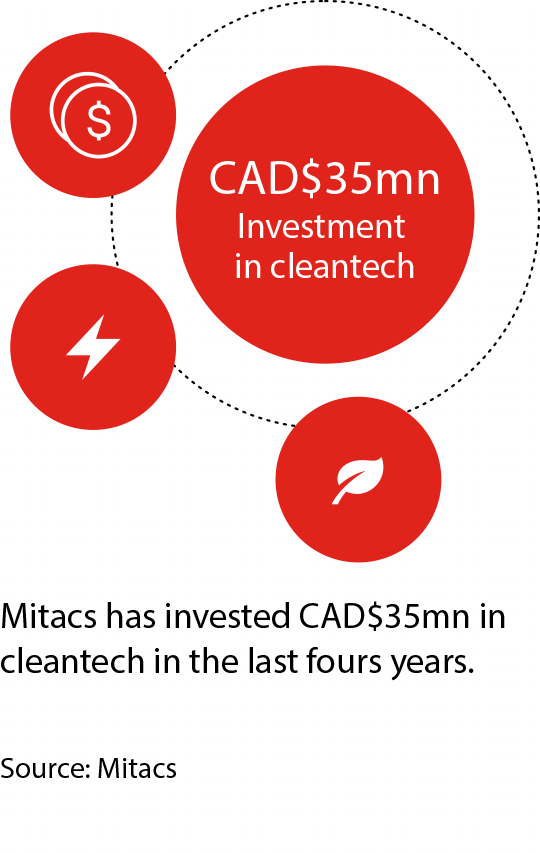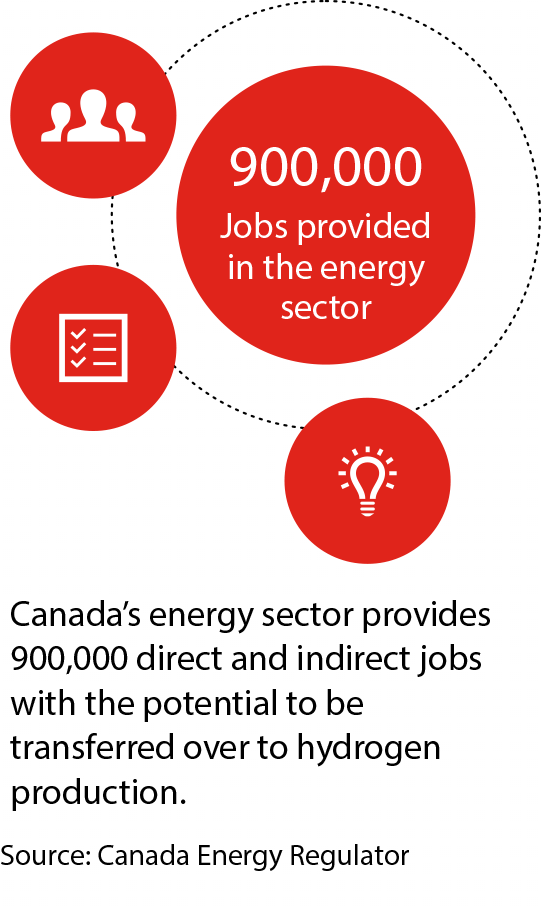With the world's most educated workforce, Canada is already well-placed to embark on its energy transition
A transformative source of energy, low-carbon hydrogen is central to Canada’s commitment to reach net zero by 2050. Not only does the fuel have the potential to create a CAD$50bn industry in Canada, but it will also drive economic growth while acting as a catalyst for what has been described as a ‘green collar’ revolution in the country’s job market.
“Climate action will be a cornerstone of our plan to support and create a million jobs across the country,” Canadian Prime Minister Justin Trudeau said in a speech to the Canadian Parliament in September 2020. “We can create good jobs today and a globally competitive economy not just next year, but in 2030, 2040 and beyond.”
Sources: Clean Energy Canada
The clean energy sector is predicted to be a major contributor of jobs to the Canadian economy by 2030
With almost half a million people already employed in the oil and gas sector, Canada is well-placed to meet the demands these new industries will make upon its workforce. Approximately 60 per cent of Canada’s population has completed tertiary level education, the highest rate in the OECD. It also has 2.8 million STEM graduates, an estimated 80 per cent of whom stay in the country. But even with this abundance of educational riches, labour market demand is already outstripping supply.
Source: Invest in Canada
Canada has one of the world’s most highly educated workforce
Source: PitchBook
Provinces with the largest number of hydrogen and fuel cell companies in Canada
Back to top









